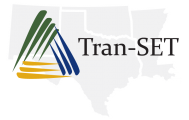Document Type
Data Set
Publication Date
8-2021
Abstract
In Louisiana, most districts restripe their roadways using waterborne paints every other year; this strategy is questionable in terms of efficiency and economy. Meanwhile, previous studies showed substantial variability in the paint service life throughout the United States ranging between 0.25 and 6.2 years. Shortcomings in modeling the retroreflectivity of waterborne paints appear to significantly contribute to these variations as several studies predicted these values using degradation curves with a coefficient of determination (R2) as low as 0.1. Therefore, the objective of this study was to (i) develop new cost-effective restriping strategies using 4-inch (15-mil thickness) and 6-inch (25-mil thickness) wide waterborne paints when applied on asphalt pavements in hot and humid climates, and (ii) employ an advanced machinelearning algorithm to develop performance prediction models for waterborne paints considering the variables that are believed to affect their performance. To achieve these objectives, National Transportation Product Evaluation Program (NTPEP) data were collected and analyzed to evaluate the field performance of waterborne paints commonly used in Southern United States. Results indicated that 4-inch wide standard paints exhibited service life up to four years depending on the line color, traffic and initial retroreflectivity, while 4-inch wide high-build paints had a service life of at least three years. Based on a life-cycle cost analysis, it was concluded that LaDOTD could restripe their district roads every three years instead of the current two-year period using the same product (4-inch or 6-inch wide) saving about $20 or $2 million, respectively, every year when restriping a 5,000-mile network. Additionally two machine-learning models were developed with an acceptable level of accuracy, and that can predict the skip and wheel retroreflectivity of waterborne paints for up to three years using only the initial measured retroreflectivity and the anticipated project conditions over the intended prediction horizon, such as line color, traffic, air temperature, etc. These models could be used by transportation agencies throughout the United States to (1) compare between different products and select the best product for a specific project, and (2) determine the expected service life of a specific product based on a specified threshold retroreflectivity to plan for future restriping activities.
Recommended Citation
Mousa, M., & Hassan, M. (2021). Maintenance and Restriping Strategies for Pavement Markings on Asphalt Pavements in Louisiana. Retrieved from https://repository.lsu.edu/transet_data/128


Comments
Tran-SET Project: 20BLSU03